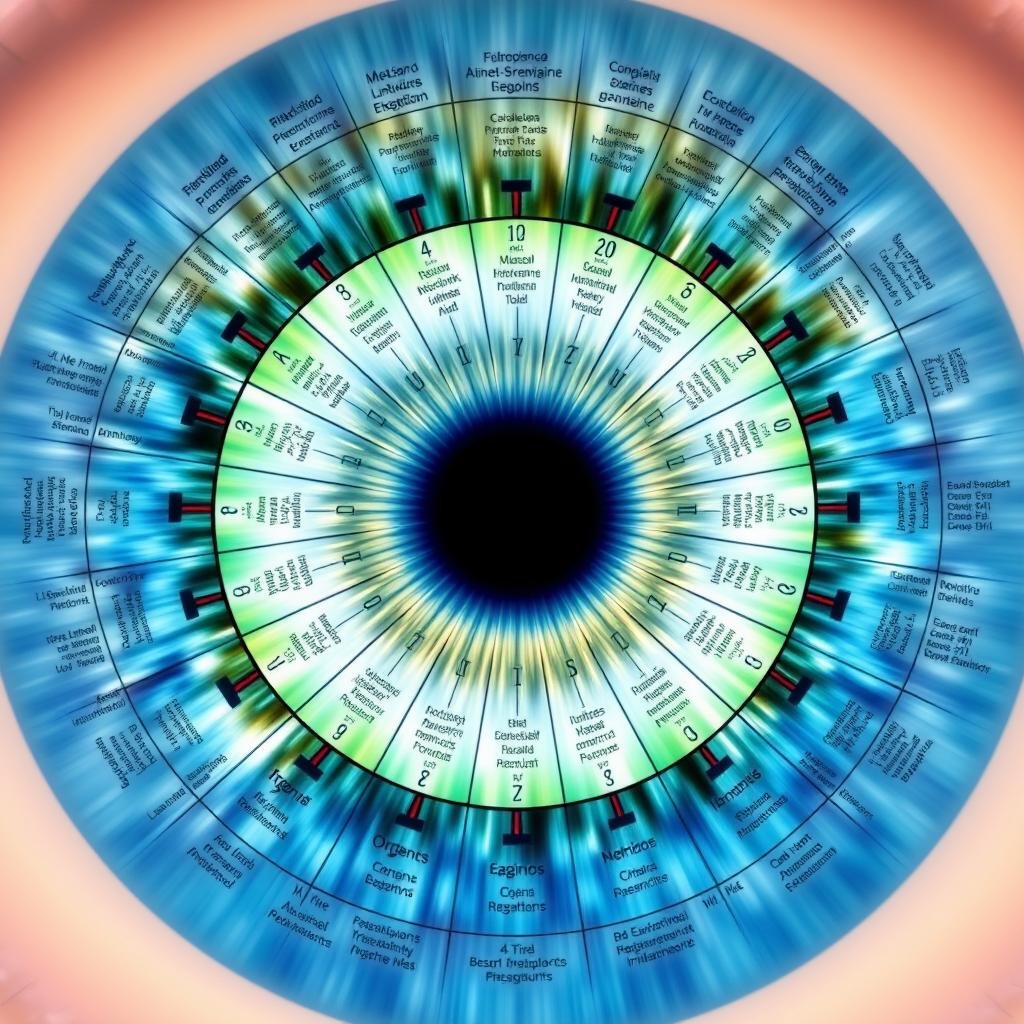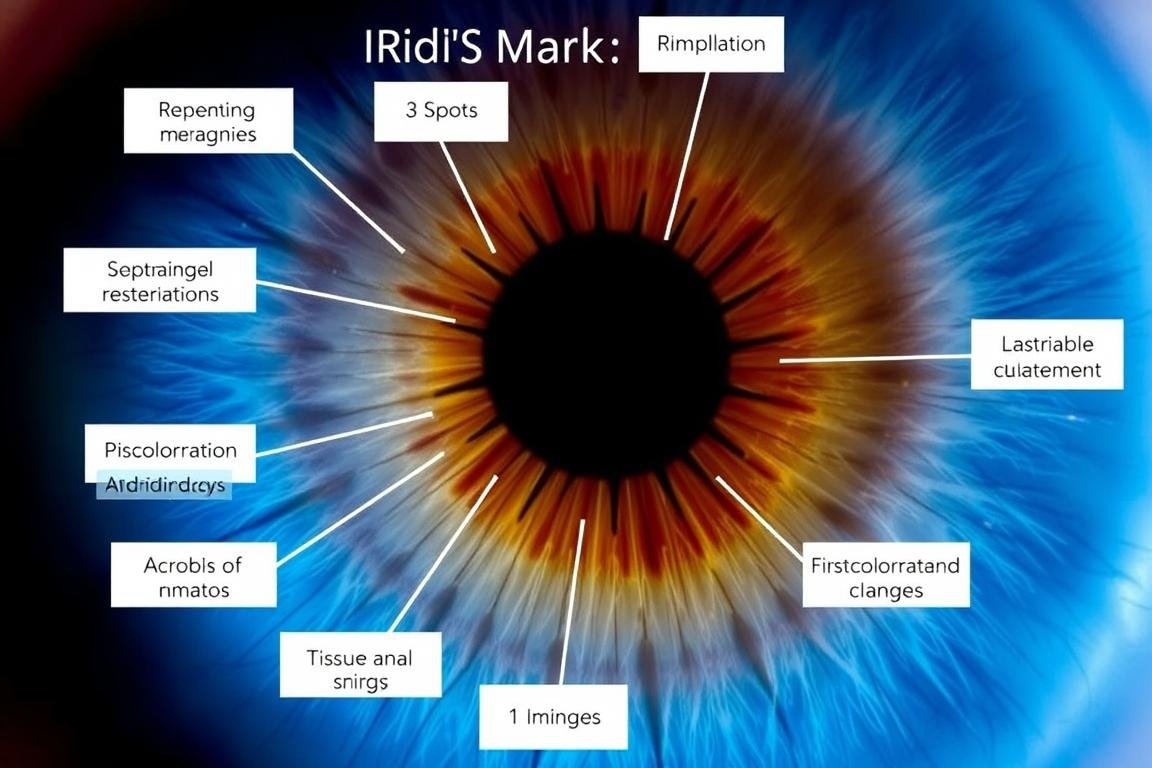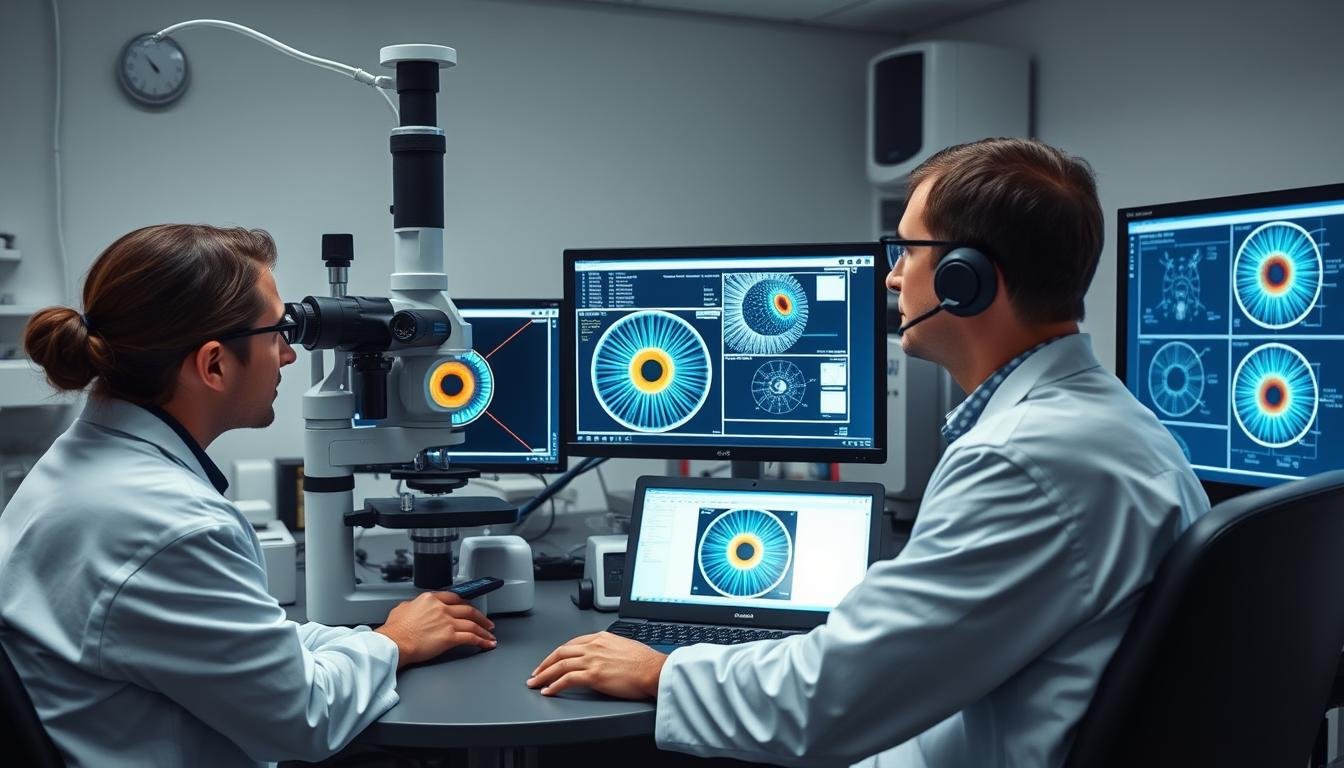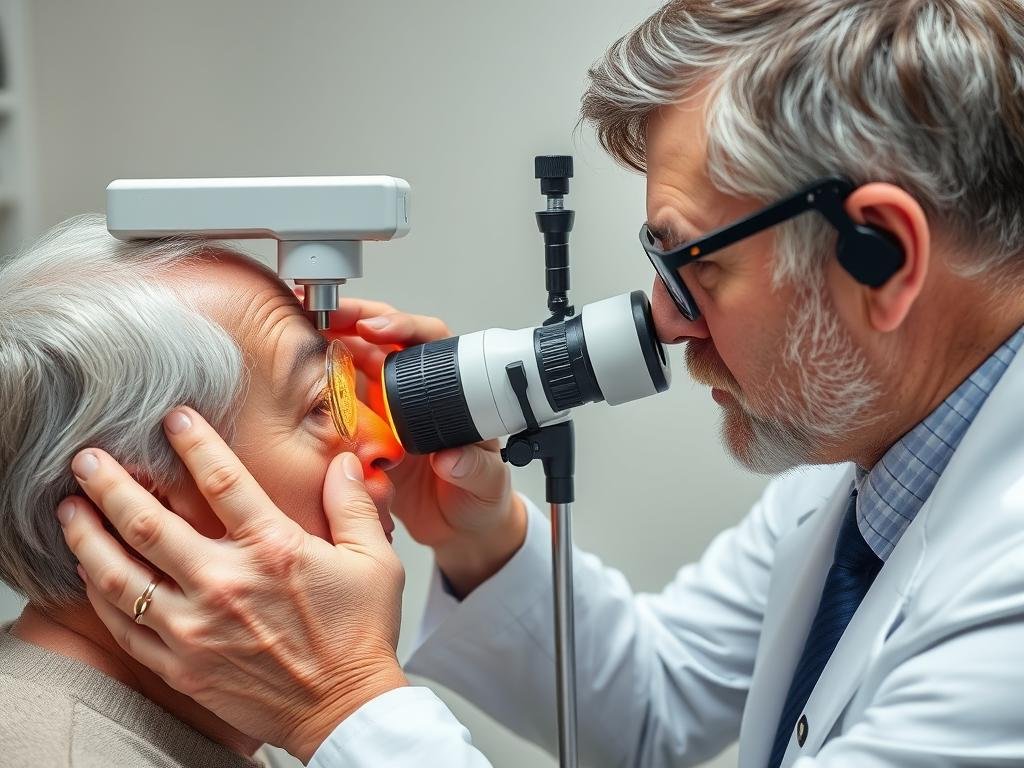The fascinating field of iridology offers a unique window into our body’s health through careful examination of the iris. The مخطط علم القزحية للعين اليسرى specifically maps connections between the left iris and right-side organs, providing insights that complement traditional medical approaches. This comprehensive guide explores the scientific principles behind these connections, offering both practitioners and curious individuals a deeper understanding of how iris analysis can contribute to holistic health assessment.
فهم مخطط علم القزحية للعين اليسرى Fundamentals
Iridology is the study of the iris—the colored part of your eye—to assess potential health conditions. Practitioners believe that different zones of the iris correspond to various organs and systems in the body. The مخطط علم القزحية للعين اليسرى serves as a detailed map that helps interpret these connections, specifically focusing on how the left iris reflects the condition of organs on the right side of the body.
Comprehensive مخطط علم القزحية للعين اليسرى showing organ and system mappings
The Cross-Body Connection in مخطط علم القزحية للعين اليسرى
One of the most intriguing aspects of iridology is the cross-body connection. The left iris primarily corresponds to the right side of the body, while the right iris reflects the left side. This contralateral relationship is based on the neurological crossover that occurs in our brain’s hemispheres. The nerve fibers from each eye cross at the optic chiasm, creating this mirrored relationship between eyes and body sides.
Download Your Comprehensive Iridology Guide
Get our detailed مخطط علم القزحية للعين اليسرى with a complete interpretation guide. Perfect for beginners and practitioners alike.
تنزيل الرسم البياني المجاني
The Scientific Basis Behind مخطط علم القزحية للعين اليسرى تحليل
While iridology remains controversial in mainstream medicine, several physiological mechanisms potentially explain the connection between iris markings and organ health. The iris contains thousands of nerve endings connected to the brain via the optic nerve. These connections form part of the body’s complex neural network, potentially allowing changes in organ function to manifest as visible patterns in the iris.
Neurological Pathways Supporting مخطط علم القزحية للعين اليسرى Readings
The autonomic nervous system, which regulates involuntary bodily functions, has extensive connections throughout the body. Research suggests that these neural pathways may transmit information about organ status to the iris through reflex arcs. The iris’s rich supply of blood vessels and nerve fibers makes it particularly responsive to these signals, potentially explaining why practitioners observe correlations between iris markings and health conditions.

Neural pathways connecting the left eye to right-side organs
Embryological Development and the مخطط علم القزحية للعين اليسرى
Another scientific explanation comes from embryology. During fetal development, the eyes form from the same embryonic tissue layer (ectoderm) as the nervous system. This shared developmental origin creates intrinsic connections between the eyes and the nervous system, potentially allowing the iris to reflect changes in various body systems through these primitive developmental pathways.
Detailed Mapping of the مخطط علم القزحية للعين اليسرى
ال مخطط علم القزحية للعين اليسرى divides the iris into multiple zones, each corresponding to specific organs and systems primarily on the right side of the body. Understanding this mapping is essential for accurate iridology analysis.

Detailed zone mapping of the مخطط علم القزحية للعين اليسرى
Key Zones in the مخطط علم القزحية للعين اليسرى
Upper Region (10-2 o’clock)
- الدماغ والدورة الدموية الدماغية
- Right side of sinuses and head
- Pituitary and pineal glands
- Right ear and eye
Right Upper Quadrant (2-4 o’clock)
- Right lung
- Right breast
- Right lymphatic system
- Right shoulder
Right Middle Area (4-7 o’clock)
- Liver
- Gallbladder
- الكلى اليمنى
- Ascending colon
Lower Region (7-9 o’clock)
- Small intestine
- Appendix
- الأعضاء التناسلية الصحيحة
- Right leg and foot
ال مخطط علم القزحية للعين اليسرى also includes concentric rings representing different tissue layers, from the digestive system in the center to the skin and extremities in the outer ring. This layered approach allows practitioners to assess not just which organ might be affected but also the depth or severity of the condition.
Speak With an Iridology Expert
Have questions about your iris patterns? Get a free 15-minute consultation with a certified iridologist to interpret your unique iris signs.
Book Free Consultation
Interpreting Signs in the مخطط علم القزحية للعين اليسرى
Iridologists analyze various markings, colors, and patterns in the iris to assess health status. When examining the مخطط علم القزحية للعين اليسرى, practitioners look for specific indicators that may suggest imbalances or potential health concerns in right-side organs.

Common iris markings and their meanings in مخطط علم القزحية للعين اليسرى analysis
Key Indicators in مخطط علم القزحية للعين اليسرى تحليل
| علامة القزحية |
Appearance |
Potential Indication |
| Lacuna |
Open, cryptlike lesion |
Potential weakness or inflammation in corresponding organ |
| دائرة نصف قطرها الشمسية |
خطوط تشبه المتحدث تشع إلى الخارج |
Toxin elimination pathways, potential liver stress |
| الوردية اللمفاوية |
White circular ring around outer iris |
احتقان نظام اللمفاوية |
| حافة سكور |
Dark ring at outer edge of iris |
Skin elimination issues, potential toxin buildup |
| حلقات الأعصاب |
Circular rings resembling ripples |
Nervous tension, stress response patterns |
| بقع الصباغ |
Dark spots in specific zones |
Potential toxin accumulation in corresponding organ |
When analyzing the مخطط علم القزحية للعين اليسرى, practitioners consider not just the presence of these signs but also their intensity, size, and relationship to other markings. The holistic pattern provides a more complete picture than any single marking alone.
Case Studies: مخطط علم القزحية للعين اليسرى in Clinical Practice
Examining real-world applications helps illustrate how the مخطط علم القزحية للعين اليسرى is used in practice. The following case studies demonstrate correlations between iris signs and health conditions, particularly focusing on right-side organs.

Before and after iris changes following health interventions
Case Study: Liver Function and مخطط علم القزحية للعين اليسرى Correlations
A 45-year-old patient presented with fatigue and digestive complaints. The مخطط علم القزحية للعين اليسرى analysis revealed distinct markings in the liver zone (4-5 o’clock position). Laboratory tests later confirmed elevated liver enzymes. After three months of targeted nutritional support and lifestyle modifications, follow-up iris analysis showed reduced intensity of the liver zone markings, correlating with improved liver function tests and symptom resolution.
Case Study: Respiratory System Reflected in مخطط علم القزحية للعين اليسرى
A 38-year-old with recurring right-sided bronchial issues showed distinct markings in the lung area (2-3 o’clock position) of their مخطط علم القزحية للعين اليسرى. The practitioner noted increased whitish fibers and a small lacuna. After addressing underlying allergies and improving respiratory health through specific interventions, subsequent iris analysis showed a reduction in these markings, corresponding with improved respiratory function.
Join Our Iridology Webinar
Learn how to interpret your own iris patterns with our expert-led online workshop. Live Q&A included!
Register Now
Scientific Evidence and Controversies Surrounding مخطط علم القزحية للعين اليسرى
While iridology has passionate practitioners worldwide, it’s important to acknowledge the ongoing scientific debate surrounding its validity. Understanding both supporting evidence and criticisms provides a balanced perspective on the مخطط علم القزحية للعين اليسرى as a diagnostic tool.

Scientific research being conducted on iridology patterns
Supporting Research for مخطط علم القزحية للعين اليسرى تحليل
Some studies have found correlations between specific iris signs and certain health conditions. Research in Russia and Germany has documented changes in iris fibers corresponding to inflammatory processes. Additionally, studies on iris texture and pattern recognition using advanced imaging technology have shown promising results in identifying certain systemic conditions through iris analysis.
Limitations and Criticisms of مخطط علم القزحية للعين اليسرى المنهجية
Several controlled studies have failed to demonstrate that iridologists can consistently diagnose specific conditions through iris examination alone. Critics point out that many iris patterns are genetically determined and remain stable throughout life, questioning how effectively they can reflect changing health status. The lack of standardized methodology and interpretation guidelines also presents challenges for scientific validation.
الفوائد المحتملة
- طريقة التقييم غير الغازية
- قد يكتشف اختلالات خفية قبل ظهور الأعراض السريرية
- Encourages holistic health perspective
- Can complement other diagnostic approaches
القيود
- التحقق العلمي المحدود في الدراسات الخاضعة للرقابة
- Potential for subjective interpretation
- لا ينبغي أن يحل محل التشخيص الطبي التقليدي
- Practitioner skill and experience vary widely
The scientific community generally recommends using iridology as a complementary approach rather than a primary diagnostic method. When combined with conventional medical assessment, the مخطط علم القزحية للعين اليسرى may provide additional insights into health patterns and potential areas of concern.
التطبيقات العملية لل مخطط علم القزحية للعين اليسرى
For those interested in exploring iridology, understanding how to practically apply the مخطط علم القزحية للعين اليسرى is essential. Whether you’re a health practitioner or simply curious about your own iris patterns, these practical guidelines can help you begin your exploration.

Professional iridology assessment using specialized equipment
How to Examine Your Own مخطط علم القزحية للعين اليسرى
While professional analysis is recommended for detailed assessment, you can begin exploring your own iris patterns with these simple steps:
- Use good lighting – natural daylight is best
- Stand in front of a mirror or use a magnifying mirror
- Gently pull your lower and upper eyelids to fully expose the iris
- Compare what you see with a standard مخطط علم القزحية للعين اليسرى
- Take clear photographs to track changes over time
Remember that self-assessment has limitations. Professional iridologists use specialized equipment and have extensive training in pattern recognition and interpretation.
دمج مخطط علم القزحية للعين اليسرى Analysis with Other Health Approaches
For optimal results, consider how iridology can complement other health assessment methods:

Holistic health assessment combining iridology with other methods
- Use iris analysis as one component of a comprehensive health assessment
- Combine findings with conventional medical test results
- Consider lifestyle factors, nutritional status, and genetic predispositions
- Work with healthcare providers who respect both conventional and complementary approaches
- Track changes over time to assess the effectiveness of health interventions
This integrated approach maximizes the potential benefits of مخطط علم القزحية للعين اليسرى analysis while ensuring you don’t miss important health information that might require conventional medical attention.
Conclusion: The Future of مخطط علم القزحية للعين اليسرى تحليل
ال مخطط علم القزحية للعين اليسرى represents a fascinating intersection of traditional observation and modern health assessment. While scientific validation remains ongoing, many practitioners and patients find value in the holistic perspective it provides, particularly in understanding the connection between the left iris and right-side organs.

The future of iridology: Advanced digital analysis with AI technology
As technology advances, we’re seeing promising developments in digital iris analysis, pattern recognition algorithms, and correlation studies that may provide more objective validation for iridology practices. These advancements could help bridge the gap between traditional iridology wisdom and modern scientific understanding.
Whether you approach the مخطط علم القزحية للعين اليسرى as a curious explorer or a serious health practitioner, remember that it works best as part of an integrated approach to health. By combining the insights from iris analysis with conventional medical wisdom and a holistic lifestyle perspective, you can develop a more comprehensive understanding of your body’s unique patterns and potential health needs.
Start Your Iridology Journey Today
Download our complete مخطط علم القزحية للعين اليسرى and beginner’s guide to understanding your iris patterns.
Get Your Free Resources
كثيرا ما يتم طرح الأسئلة حول مخطط علم القزحية للعين اليسرى
How accurate is the مخطط علم القزحية للعين اليسرى for diagnosing health conditions?
Iridology is not considered a diagnostic tool in conventional medicine. Rather than diagnosing specific diseases, it may help identify areas of potential weakness or stress in the body. The مخطط علم القزحية للعين اليسرى should be used as a complementary assessment method alongside conventional medical testing for accurate diagnosis.
Why does the left eye correspond to the right side of the body?
This cross-body correspondence is based on the neurological crossover that occurs in our central nervous system. The optic nerves from each eye cross at the optic chiasm, creating a contralateral (opposite side) relationship between each eye and the brain hemisphere it primarily connects to. This neurological pattern is believed to extend to the relationship between the iris and body organs.
Can iris patterns change over time?
The basic structure and color of the iris are genetically determined and remain relatively stable. However, iridologists believe that certain markings, pigmentation, and fiber patterns can change in response to health conditions. These changes are typically subtle and require professional equipment and expertise to detect accurately.
How long does it take to learn to interpret the مخطط علم القزحية للعين اليسرى؟
Basic understanding of iris zones can be gained in a few weeks of study, but proficient interpretation typically requires several months to years of training and practice. Professional iridologists often complete certification programs that include anatomy, physiology, and extensive pattern recognition training.
هل القزحية مشمولة بالتأمين الصحي؟
In most countries, iridology consultations are not covered by conventional health insurance. However, some complementary health insurance plans may offer partial coverage. It’s best to check with your specific insurance provider regarding coverage for complementary and alternative medicine services.





















